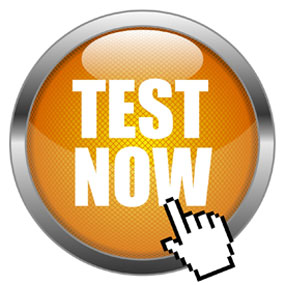 Everyone talks about their A1c test results. Why? Well, monitoring blood glucose levels is the cornerstone of good diabetes management. While daily monitoring is both necessary and good, it does not necessarily provide an accurate measure of how successful you are in controlling your blood sugar.
Everyone talks about their A1c test results. Why? Well, monitoring blood glucose levels is the cornerstone of good diabetes management. While daily monitoring is both necessary and good, it does not necessarily provide an accurate measure of how successful you are in controlling your blood sugar.
The A1c blood test, sometimes called the bgb A1c or hemoglobin A1c, provides a more accurate measure of your blood sugar management over time.
How does it do that? The test measures your glucose levels over a three month period. Daily monitoring, on the other hand, only test your glucose level at that given moment in time. Let’s look at how the test works, then compare your results to our hemoglobin A1c chart to see how you are doing.
How the A1c Test Works
The test measures the amount of glycated hemoglobin in the blood. Glycated hemoglobin is a combination of hemoglobin (red blood cells) and sugar (glucose). Red blood cells live for approximately 3 months. Thus, the A1c test allows doctors to determine how much sugar has been in the body for the preceding 3 months by measuring the amount of glycated hemoglobin that is in the blood. This longer period helps doctors see the “big picture” of how you are doing.
The higher the percentage the worse your diabetes management is. The normal result for most diabetics is above 6 percent. A number below 6 percent, will generally correspond with a person who doesn’t have diabetes.
Most doctors have traditionally been comfortable if the result is below 7 percent. However, new research suggests that a result between 6 percent and 7 percent may be too high. Regardless, a result above 7 percent is a clear indication of poor diabetes management and that you are at a greater risk of developing diabetes complications.
UPDATE 2010 – A1C Test is New Diabetes Diagnosis Tool
At the beginning of 2010, the Americans Diabetes Association (ADA) decided that the A1c test is now appropriate for diagnosing diabetes. The new guidelines were issued in the Clinical Practice Recommendations for 2010. The hope is that more people will be diagnosed because the A1c does not require a fast before taking.
It is thought that many people avoid the other diagnostic tests because they require a fast. It is estimated that up to 25 percent of all diabetics are undiagnosed.
The guidelines state that people without diabetes will normally have a reading around 5 percent. People with pre-diabetes will have a reading between 5.7 and 6.4 percent. Lastly, a reading of 6.5 percent or higher will be diagnosed as having diabetes.
Hemoglobin A1c Chart
Human nature is such that we want to compare things. We want to compare our A1c results against our fellow diabetic. Alternatively, we are curious about how our A1c result compares to the results we see from our glucose meter. The following A1c chart, or hemoglobin A1c chart, provides a rough comparison between the two measures.
However, as stated above, keep in mind that each test measures two different things (short term versus long term results). Here is the chart:
| A1C Level | Plasma Level |
| 12 | 345 |
| 11 | 310 |
| 10 | 275 |
| 9 | 240 |
| 8 | 205 |
| 7 | 170 |
| 6 | 135 |
Home A1C Blood Test Now Available

The Bayer A1C Now SelfCheck System is the first at home A1C test kit. Results can be found within 5 minutes with “lab accurate” readings.
This test is not inexpensive, however. The link here is for ONE test. If you purchase 10 tests at one time, you can reduce your per test cost significantly. Click here for the A1CNOW SELFCHECK 2 TEST 1EA CHEK DIAGNOSTICS (DIABETES).
There you have it. Hopefully, this will get you started understanding the A1c blood test and your A1c results and how well you are doing managing your diabetes.
Additionally, you can find more content about diabetes testing supplies by clicking here.
SOURCE:
ADA Clinical Practice Recommendations 2012 (Accessed January 2012)
National Institute of Health, Medline Plus, Medical Encyclopedia, HbA1c (accessed December 2008).
By Erich Schultz, Last Reviewed April 2013.
